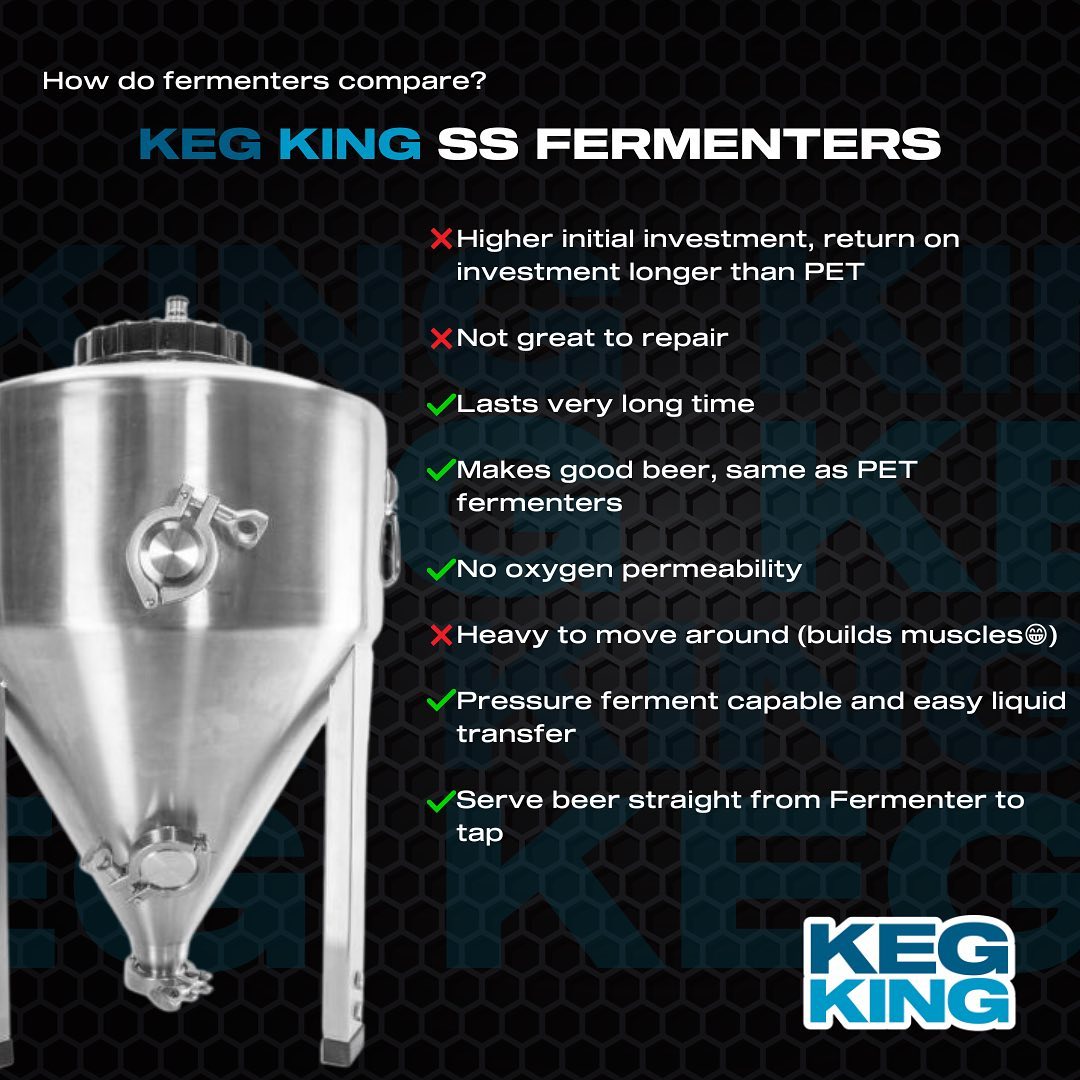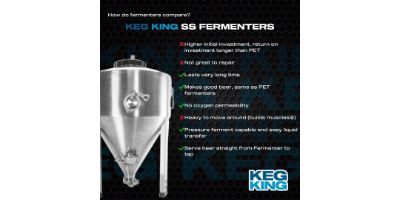Fermenter Apollo + Spundy Bundle 60L Unitank
Apollo Unitank 60L + Spundy Compact Spunding Valve Bundle
Get our Apollo (Fermenter King) 60L Unitank PLUS a Spundy Compact Spunding Valve at one low price!
Apollo 60L is the largest P.E.T. pressure fermenter in our range with the highest level of fermentation control.
Paired with the Spundy, it's a full, ready to use pressure fermentation system!
Get this deal and get your double batch fermenting under pressure with percision control from our Spundy Compact Spunding Valve.
The 60L Apollo Unitank is big enough to match your homebrewing ambitions! It’s so big we had to put it on castor wheels!
Easy to use, powerful design provides brewers with the ability to:
Ferment Under Pressure
Dryhop Sanitarily
Carbonate
Monitor Internal Temperature
Serve
Apollo 60L Unitank provides brewers with:
New Plunger Valve - More Sanitary and easy to use
New Thermowell – Get true liquid temperature readings
New Floating Dip Tube – Fixed central tank position
Optional Temp Control – Attach our Temp Control Kit to heat or cool your tank internally
CIP Capable – Attach our Cleaning Kit for easy Clean In Place clean up
Compatible with Gen 1 collection bottles
Includes:
60L/15.8G Conical Fermenter Tank
Collection Bottle
Plunge Dump Valve/Thermowell
Stainless Steel Stand with Castors
Third Generation Pressure Lid
Floating Dip Tube with Centre Tank Alignment
Optional Additional Features:
CIP Cleaning Kit
Temp Control Kit
Insulation Jacket
Dimensions:
1150mm Height from castor wheels to top of plunge valve in closed position
1175mm Height from castor wheels to top of plunge valve in open position
410mm wide across base of frame
Please note:
Keg King highly advises using homebrew-grade cleaning chemicals like phosphoric acid-based sanitisers and non-caustic cleaners. Follow the recommended dilution rates on the product labels or from reputable homebrew books such as How To Brew by John Palmer.
Phosphoric acid sanitisers should have the pH range between 2.2 - 2.8. This is about a 1.5 - 2ml of sanitiser in 1L of water. Above the pH of 2.8, the sanitiser fails the 30-second test to prevent microbial growth. Below 2.2ph range, the sanitiser will affect the flavour of beer.
Heat does more damage to PET fermenters than chemicals. At 55 degrees Celsius, the PET will soften and deform permanently. It is best to allow hot cleaning solutions to cool down to at least 30 degrees C before use.
Adhering to these recommendations will ensure the integrity of your fermenter tank for its useable life.
| Ribbon | None |
|---|---|
| Discontinued | No |
| Order By Request | No |
| video_embed_code | |
| Sale | No |
| New | No |










